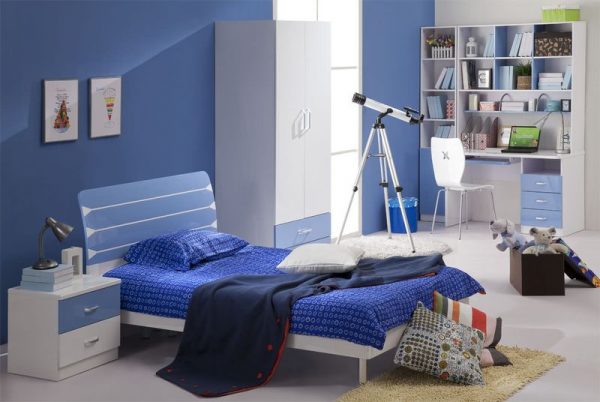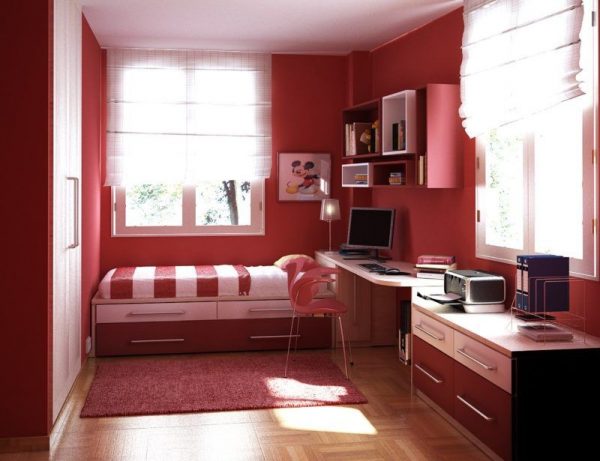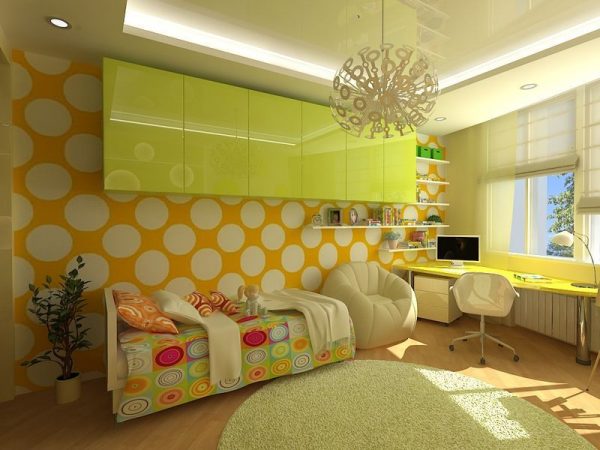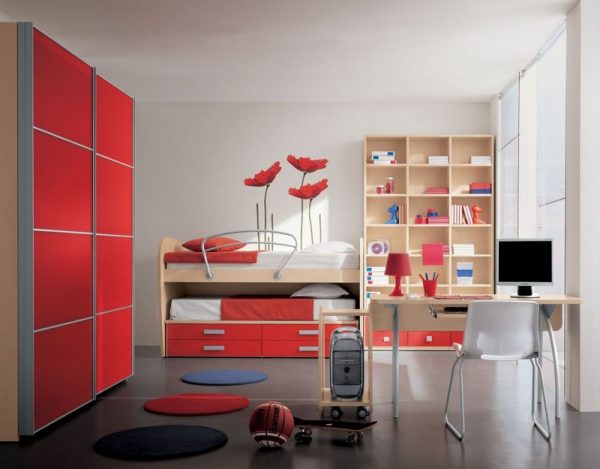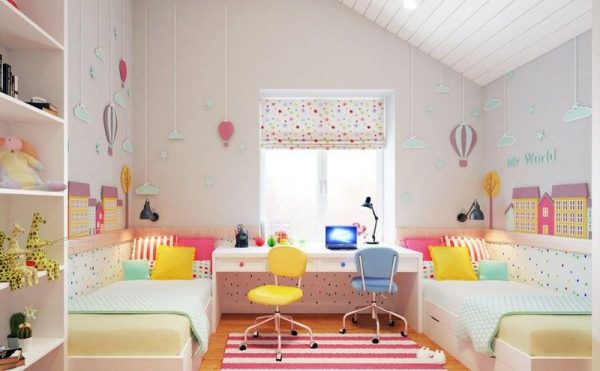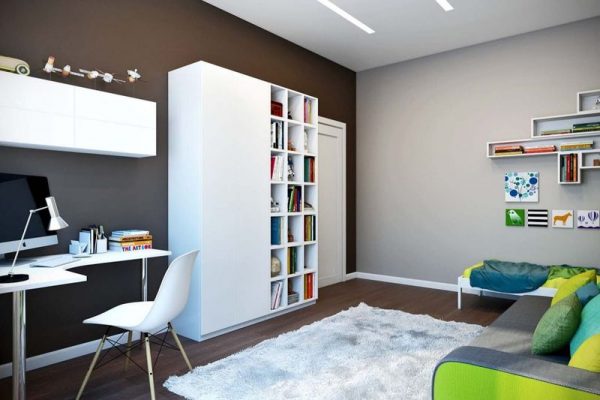Among the factors affecting mental activity, is the environment. It is wise to choose the color of the walls, especially if this is the room of a schoolchild or student, in fact, is not as easy as it might seem. We will figure out which paint to design the study area is worth stopping for, and which is better to refuse.
- Why is it important to choose the right color for your workspace?
- Which color to choose
- Research
- The interior of the children's room

Why is it important to choose the right color for your workspace?
Each color in its own way affects the mood and condition of a person: some shades are able to tone and invigorate, others to relax and soothe. Productivity and organization can also be partly stimulated with well-chosen wall paints.
Rooms for rest, sleep, training and work cannot be decorated in the same style, the color of the interior must be chosen individually, depending on the purpose of the room. For the bedroom, gentle, pastel colors that create a sense of harmony are suitable. And the study room should activate efficiency and concentration. For this, it is advisable to use a rich decor.
to contents ↑Which color to choose
In accordance with color psychology, the predominance of cold shades in the interior produces a calming effect on a person, thereby reducing its performance. Thus, all blue-green shades are best left to decorate the bedroom or living room.
A completely different psychological effect has a warm red color. He is very expressive, energetic, emotional. Many believe that red tones are too aggressive on the psyche. But in fact, they attract attention and give vigor. If you correctly apply the red gamut to decorate the study area, academic performance at school or institute can significantly catch up.
One more suitable background for training is yellow. Solar decor helps to generate new ideas, focus on fulfilling tasks, improves memory. The space, decorated in a sunny yellow palette, will be a good platform for the development of creativity and creativity.
Among the yellow tones, you can choose golden, lemon or mustard, and red colors can have a burgundy, brick or raspberry subtona. Here you should focus only on your own preferences.
Of course, you can also use a neutral color (gray or beige), but the monotonous atmosphere looks too boring, and you don’t want to study in such a room at all. In this case, the interior can be "freshened up" using a yellow-red color scheme. A balanced combination of brightness and restraint will harmoniously fit into your office.
to contents ↑
Research
A team of researchers from the Australian University of Curtin, while studying this issue, confirmed: rooms with a bright design really can increase the degree of concentration.
Scientists conducted an interesting experiment: student participants were invited to familiarize themselves with the passage, and then answer questions on the topic with several possible answers. The test was borrowed from the standard entrance test for admission to universities in the United States and Canada (SAT testing). The subjects underwent an experiment in rooms with various color schemes, including pale and expressive shades of blue, red and yellow.
The results of the study showed that the estimated points obtained taking into account the understanding of the text read were higher in bright yellow and red rooms.
The group’s lead specialist (Asel Al-Ayash) notes that boring and complex reading tasks are performed more efficiently in bright color conditions: the pulse rate increases, the brain works, and the productivity rises to the optimal level.
Students said that it was more comfortable to deal with them in a room with a light finish that has a relaxing effect. Perceiving the scarlet color as a factor of irritation and discomfort, most of the project participants claimed that it was completely unsuitable for the office. But, given the increased test results under such conditions, the conclusion suggests itself: a little discomfort is exactly what is required to improve brain activity. Feeling relaxed will not help students to be alert and active.
According to the author of the project, the red and yellow decor is the future of the learning environment. Curtin and several other schools in western Australia have already shown interest in the works presented. Their plans are to improve the design of their classrooms and reading rooms in order to create an atmosphere appropriate for classes.
to contents ↑The interior of the children's room
Parents, choosing decoration and furniture for the nursery, often prefer exclusively restrained shades, completely forgetting that kids are more interested in playing and having fun in a colorful room. And when the child grows up and goes to school, the interior will not lose its relevance: bright design will contribute to successful learning and homework.
Creating a design project of a room, it is important to consider beauty, comfort and functionality. Completely painting the walls in red will not be entirely appropriate, especially if the room is designed not only for study, but also for relaxation. In order not to make the room too annoying, red and yellow are recommended to be combined with other, more moderate tones.
Tip: paint the wall opposite the study area with a rich color, making it accented, and for the rest, choose more calm tones.
Additional bright accents in the form of lamps, posters or textiles will help to complete the interior.
These recommendations are useful not only to the parent of the student. It is appropriate to add a little variety to the study, student room, office or library.

